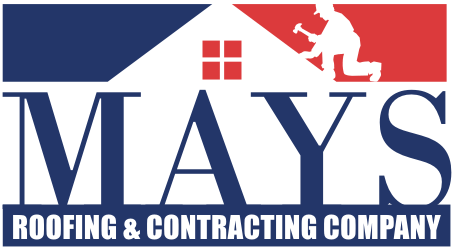How to Ensure Your Roof Can Withstand Severe Weather Events
Introduction
Your roof is the first line of defense against severe weather events. To ensure that it can withstand high winds, heavy rain, hail, and snow, it is essential to take a proactive approach to maintenance and repairs. Understanding the materials, design, and construction of your roof can help you make informed decisions about its durability and resilience. This article covers practical steps and considerations for ensuring your roof stands strong against the elements.
Understanding Weather Challenges
Severe weather can range from thunderstorms and hailstorms to blizzards and hurricanes. Recognizing the specific risks in your area is crucial for effective roof preparation. Here are common weather conditions that could impact your roof:
High Winds
Wind speeds can vary significantly during storms, with some reaching over 100 mph. Such forces can detach shingles, lift panels, and even cause structural damage.
Heavy Rain and Flooding
Continuous rainfall can lead to water accumulation, increasing pressure on the roof and creating leaks.
Snow and Ice
Accumulation of snow can load roofs beyond their design limits, leading to potential collapse. Ice dams can also form, trapping water and causing leaks.
Hail
Impact from hailstones can cause dents, cracks, or even puncture roofing materials.
Choosing Durable Roofing Materials
The choice of roofing materials significantly affects your roof’s ability to withstand severe weather. Consider the following options based on the local climate and weather risks:
Asphalt Shingles
While popular, low-quality asphalt shingles can be susceptible to wind and hail damage. Opt for high-impact rated shingles designed to withstand severe conditions.
Metal Roofing
Metal roofs are resilient against high winds and can reflect heat, making them energy-efficient. They also shed snow easily, reducing the risk of heavy accumulation.
Tile and Slate Roofing
These materials are robust and can withstand harsh weather. However, they are also heavier and may require additional reinforcement for support.
Built-Up Roofing (BUR) and Modified Bitumen
These are common choices for flat roofs and are highly resistant to weather-related wear. They can handle water pooling, making them suitable for locations prone to heavy rain.
Regular Roof Inspections
Routine inspections are critical to identifying potential issues before they escalate. Schedule regular assessments, particularly after severe weather or season changes. Key areas to inspect include:
Shingles and Tiles
Look for missing or damaged shingles and loose tiles. These can expose the underlayment and lead to leaks.
Flashing
Flashing around chimneys, vents, and valleys can deteriorate over time. Ensure it is intact to prevent water infiltration.
Gutters and Downspouts
Clogged gutters can lead to water backing up onto the roof. Ensure they are cleaned regularly and functioning properly.
Roof Maintenance Practices
In addition to inspections, consistent maintenance can enhance your roof’s durability. Implement these practices:
Clean the Roof
Remove debris, leaves, and moss to prevent moisture buildup. Regular cleaning can extend the roof’s lifespan and prevent degradation.
Trim Overhanging Trees
Branches touching or hanging over the roof pose a risk of damage during storms. Keep trees trimmed to minimize this risk.
Repair Minor Issues Promptly
Address small leaks or loose shingles immediately. Neglecting minor repairs can lead to more extensive damage down the line.
Proper Installation
A well-installed roof is crucial for long-lasting performance. Always hire qualified contractors who understand local building codes and weather considerations. Here are essential factors during installation:
Follow Manufacturer Guidelines
Each roofing material comes with specific installation guidelines. Adhering to these ensures optimal performance and warranty coverage.
Use Quality Components
Invest in reliable underlayment, flashing, and ventilation systems. These components play a significant role in preventing leaks and structural issues.
Ventilation and Insulation
Proper ventilation reduces heat buildup, preventing damage from ice dams in winter. Good insulation also lessens energy costs and prolongs roof life.
Preparing for Severe Weather Events
When severe weather is forecasted, take proactive measures to protect your roof:
Secure Loose Items
Before a storm, secure or bring indoors any outdoor furniture, decorative items, or equipment that can become projectiles in high winds.
Install Storm Shutters
Storm shutters can protect windows and reduce the risk of damage from flying debris. Consider installing them if you live in a hurricane-prone region.
Check Emergency Kits
Maintain an emergency kit with essential supplies, including flashlights, batteries, and tarps, to cover leaks if necessary. Prepare for the unexpected.
Post-Storm Assessments
After severe weather, conduct a thorough post-storm assessment of your roof:
Inspect for Damage
Look for visible damage such as missing shingles, leaks, or dented areas. This should be done safely from the ground or with the help of a professional.
Document Findings
Take photos of any damage for reference. This documentation can be crucial for insurance claims if repairs are needed.
Schedule Repairs
If you identify any damage, don’t delay in contacting a professional to perform necessary repairs. Prompt action can prevent further issues.
Insurance Considerations
Protecting your investment is critical. Review your homeowner’s insurance policy to ensure adequate coverage in case of storm damage. Key aspects to consider include:
Understand Coverage Limits
Be aware of your policy’s limits regarding roof damage caused by storms. Knowing your coverage will help you manage finances in emergencies.
Document Your Roof’s Condition
Before any severe weather, document the current state of your roof. This may assist in any insurance claims after a damaging event.
Regular Policy Updates
Ensure your insurance reflects any changes you’ve made to your roof or property. Keeping your policy updated is crucial for maximum protection.
Conclusion
In conclusion, ensuring your roof can withstand severe weather events involves a combination of choosing durable materials, performing regular inspections, conducting maintenance, and being prepared for emergencies. By taking these steps, you can significantly enhance your roof’s resilience. Remember that your roof is an integral part of your home’s overall structure and should be treated with care and attention. Investing time in understanding and preparing your roof will pay off in the long run, safeguarding your home against the unpredictable forces of nature.





 Mays Contracting
Mays Contracting


